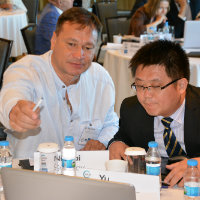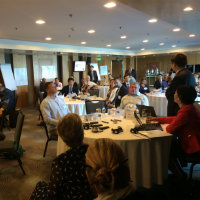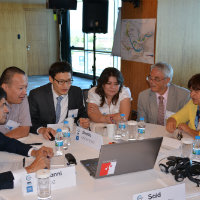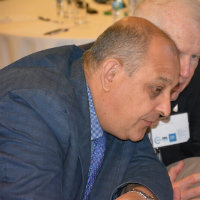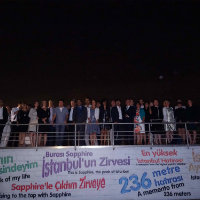
Food-Water-Energy Nexus Event Focuses on the Amu Darya River Basin
A Milestone Meeting in Istanbul
In “Triggering Cooperation across the Water-Energy-Food Nexus in Central Asia,” a first-of-its-kind meeting, 50 experts from the public and private sectors gathered in Istanbul on July 15-17, 2014. Participants exchanged best-practice ideas and collaboratively developed potential solutions appropriate for the Amu Darya River Basin, the largest river in Central Asia and part of the Aral Sea basin linking Tajikistan, Kyrgyzstan, Afghanistan, Turkmenistan and Uzbekistan.
The EastWest Institute (EWI) in partnership with the International Union for Conservation of Nature (IUCN) and the International Water Association (IWA) convened the event. It is a component of the Nexus Dialogues for Water Infrastructure Solutions, a global platform and call to action to those leading transformations in water infrastructure planning, financing and operation. “To make optimal use of increasingly scarce natural resources and avert conflict over them, cooperation must be strengthened not only across geographical boundaries but also across policy silos,” said Michele Ferenz, director of EWI’s Food-Water-Energy Nexus Program. “Convening stakeholders who don’t normally speak to each other to address sensitive issues is what EWI excels in,” she added.
The Amu Darya is a key lifeline for the peoples and economies of Central Asia, as well as a conflict flashpoint. Many of today’s challenges originate in the break-up of the former Soviet Union and its unified planning system. Particularly problematic are persistent winter energy shortages in upstream areas and crumbling irrigation infrastructure regionally, resulting in possibly the lowest water use efficiency in the world. The dramatic shrinking of the Aral Sea, in the lower reaches of the Amu Darya, has long stood as a symbol of the global ecological crisis.
At the same time, sustainably leveraging the region’s rich natural resource base is crucial to the economic and social renewal of the States of Central Asia and Afghanistan. The core workshop objective, therefore, was the identification of pragmatic steps in this direction, building on existing institutional frameworks as well as global best practice.
Considerations of financing and market development were prominent in the discussion. Gary Lawrence, chief sustainability officer of AECOM noted that “the river is probably the most important economic asset in this entire region, and we don’t treat it as an asset. We treat it as a resource that has no value assigned to it.”
Indeed, mechanisms for payment of ecosystem services across users in the basin emerged as a concrete solution. Other proposals addressed regional information exchange among riparians, capacity building, developing training centers to improve irrigation techniques and promoting regional economic integration.
Commenting on the future of the nexus in Central Asia, Iskandar Abdullaev, executive director of the Central Asian Regional Environmental Center (CAREC) said, “The nexus is still in early stages in the region. It is time to develop dynamic and concise, local level, solution oriented tools and instruments for the food-water-energy nexus.”
_


